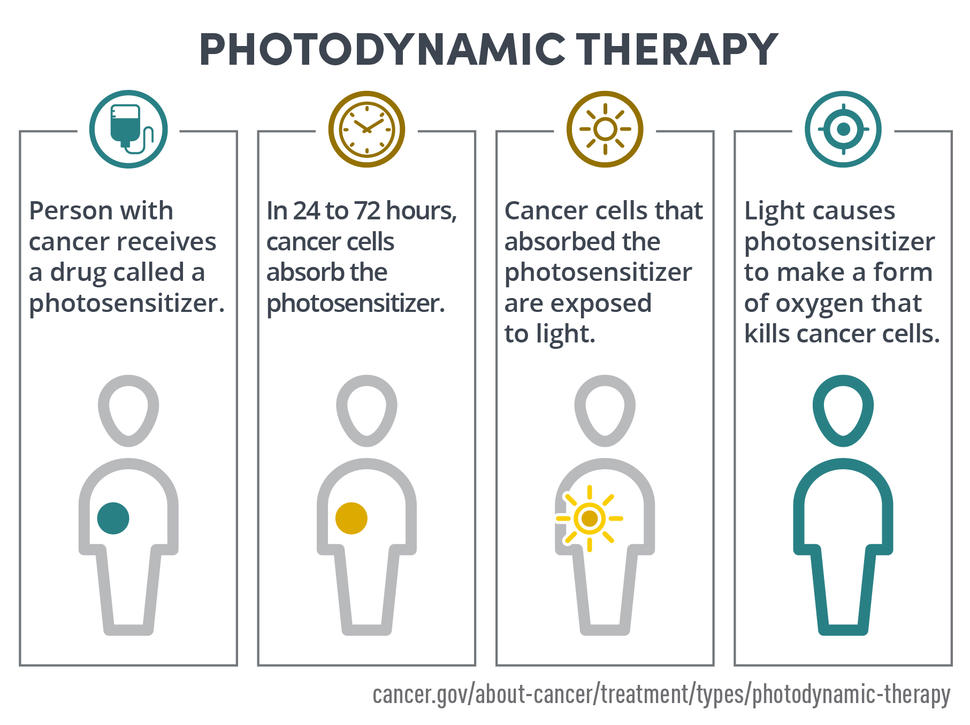Photodynamic Therapy Process
Photodynamic therapy is a local treatment which means it treats a specific part of the body. The light used in this treatment can't reach very far into tissue so photodynamic therapy is limited to use with small tumors that are on or just under the skin or on the lining of internal organs or cavities.
It is approved to treat actinic keratosis, advanced cutaneous T-cell lymphoma, Barrett esophagus, basal cell skin cancer, esophageal (throat) cancer, non-small cell lung cancer, and very early squamous cell skin cancer. It may also be used to relieve symptoms of some cancers, such as esophageal cancer when it blocks the throat.
Photodynamic therapy can harm normal cells in the treatment area and cause side effects. To learn more, visit Photodynamic Therapy for Cancer.
